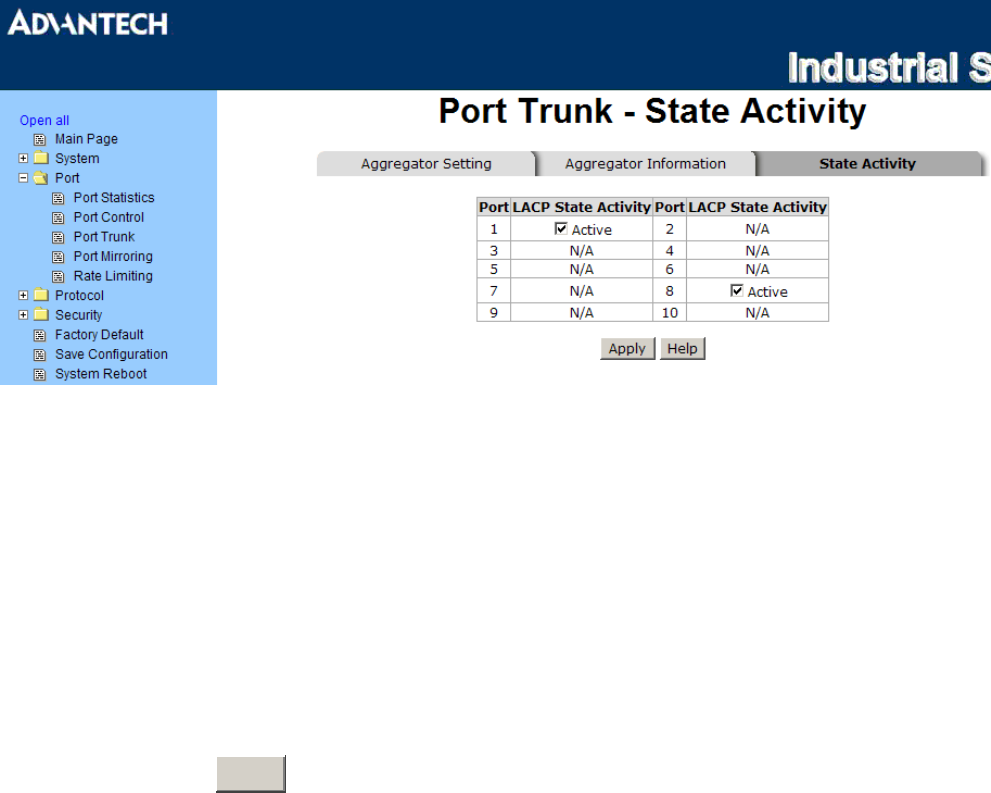
57 Chapter3
• Active: The port automatically sends LACP protocol packets.
• Passive: The port does not automatically send LACP protocol packets, and responds only if it receives
LACP protocol packets from the opposite device.
Note A link having either two active LACP ports or one active port can perform
dynamic LACP trunk.
A link has two passive LACP ports will not perform dynamic LACP trunk
because both ports are waiting for an LACP protocol packet from the opposite
device.
If you are the active LACP’s actor, after you have selected trunk port, the
active status will be activated automatically.
Figure 3.27: State Activity
Port Mirroring
The Port mirroring is a method for monitor traffic in switched networks. Traffic through ports can be
monitored by one specific port. That means traffic goes in or out monitored (source) ports will be
duplicated into mirror (destination) port.
• Destination Port: There is only one port can be selected to be destination (mirror) port for monitoring
both RX and TX traffic which come from source port. Or, use one of two ports for monitoring RX traffic
only and the other one for TX traffic only. User can connect mirror port to LAN analyzer or Netxray
• Source Port: The ports that user wants to monitor. All monitored port traffic will be copied to mirror
(destination) port. User can select multiple source ports by checking the RX or TX check boxes to be
monitored.
•
And then, click
Apply
button.


















